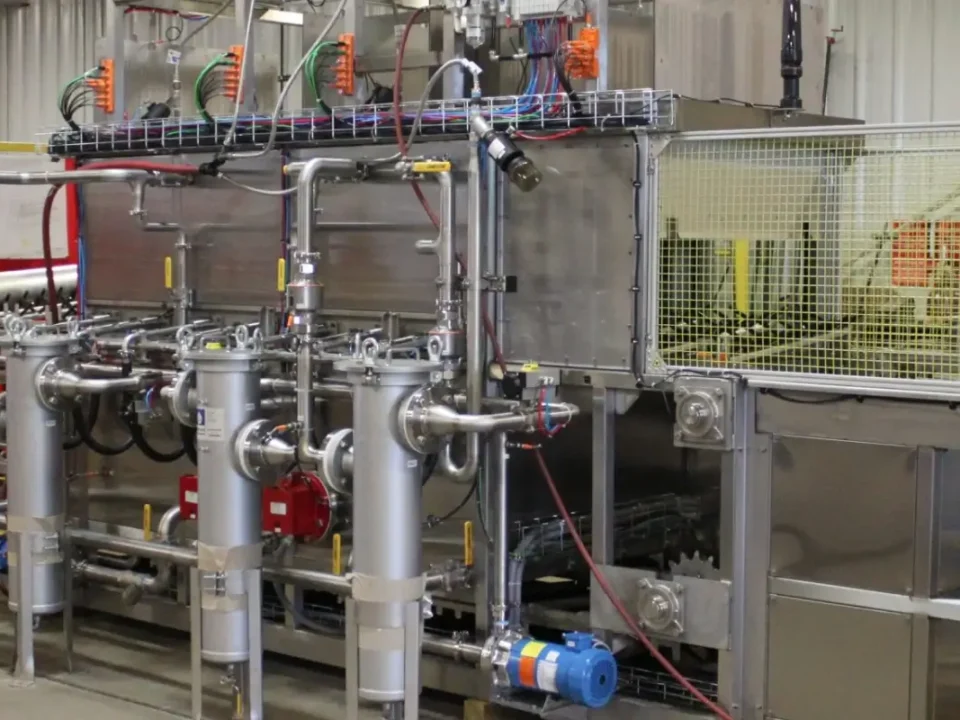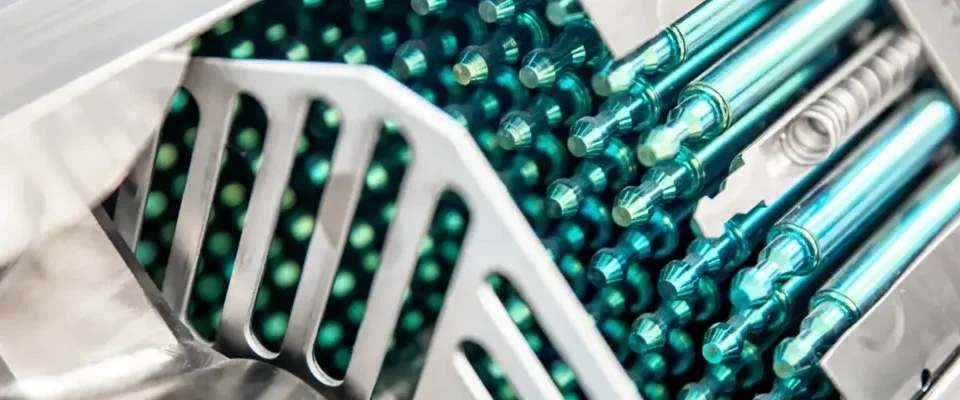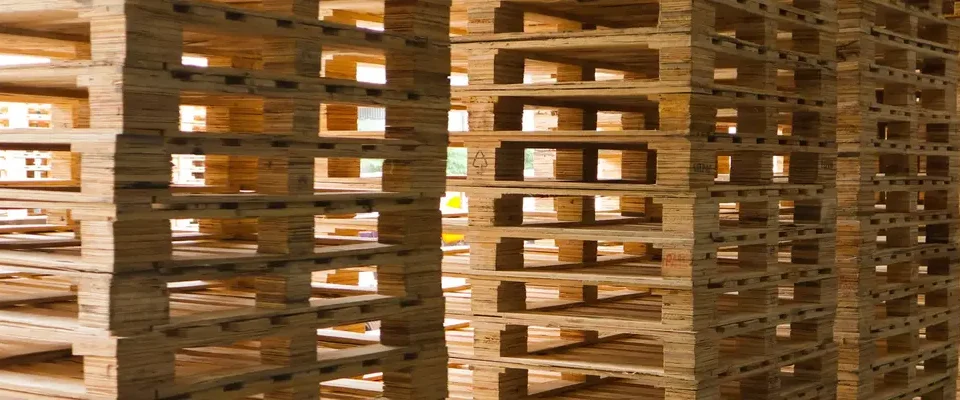- Keeping it clean since 1934!
- (440) 259-2500
- [email protected]

Millipore Testing: A Guide for Measuring and Verifying Industrial Part Cleanliness
September 15, 2021
Industrial Parts Washer and Cleaning Systems 101: The Basics of Industrial Parts Washing
Industrial parts washers and cleaning systems clean and sanitizes parts of all sizes, trays, pallets, and glassware. In this guide, we are going to cover the basics of industrial parts washing systems and the criteria that an application engineer follows when configuring the washing equipment for cleaning parts with repeatable results.
What is an Industrial Parts Washer?
An industrial parts washing and cleaning system makes it possible for parts to be cleaned and moved into the next phase of the manufacturing process. Industrial parts washers are used by manufacturers of components to remove oil, chemicals, and dirt. Applications that require automotive parts washing and cleaning, medical equipment cleaning, pharmaceutical manufacturing, or food processing components have specific requirements to meet when it comes to industrial parts cleaning.

How Does an Industrial Parts Washer Work?
Industrial parts washing systems cleans and prepares parts for manufacturing assembly, packaging and distribution, or before the final coating. The industrial parts cleaning equipment is designed specifically to meet manufacturing requirements of removing dirt, debris, paint, oil, and other substances that can contaminate the part, glassware, or medical equipment. Industrial parts washers work through a series of configurations including: filtration systems, dryers, pumps, scrubbers, brushes, conveyor belts, and cabinet closures.
The Wash
Washing and metal processing can seem confusing and difficult to achieve at times, but a more simplistic approach typically helps define the necessary process for your application. The following is a high-level formula to help understand how washing and cleaning parts works:
- Chemical + Contact Time + Impact + Heat = 100% Wash
These components are all somewhat inversely related. Once you decrease one component, typically another has to increase. It is not a perfect science – but a great rule of thumb for high-level process development.
The Coverage
Once the washing process is defined, tested and proven it is time to ensure proper spray coverage. Just as you would wash your dishes, your car, or yourself the areas that go untouched will more than likely become unwashed.
Determine what areas of your parts need to be cleaned and if any require special attention. If there are blind holes, grooves, or complex passageways that must be cleaned to remove turnings, shavings or heavy residues – custom fixtures are typically in order.
If a more general cleaning is needed for larger surface areas on part shapes that are less complex, a grid-style headers system will deliver the coverage needed.
Multi-Purpose Industrial Parts Washer and Cleaning Systems

Cabinet Parts Washer
A high-pressure parts washing cabinet is best for industrial parts cleaning low-volume applications. Versatile in function and is capable of washing anything from labware to castings, and they make excellent bottle washers. Final rinse available with fresh or DI water
Explore Cabinet Washers
Automated Industrial Washer and Parts Defect Detection System
An automated parts defect detection system can be incorporated into the industrial parts washing equipment after the parts are indexed, washed, rinsed, and dried to help identify defective parts before moving to final production.
The Part Rinsing and Drying Process
Niagara Systems are designed to meet your requirements for industrial parts cleaning, washing and drying. Parts cleaning equipment and washing systems are regulated with temperature and pressure controls to help ensure consistent water temperatures required to achieve maximum performance. Drying zones use oscillating air nozzles or fans to blow heated air throughout the chamber to remove moisture from the parts. For bottle washing, this setup provides a complete and efficient drying-cycle.
The Rinse
The rinse is the unsung hero of the wash process. Remember this is the last thing that will touch your parts prior to unloading or drying, so the part will be as clean as your rinse. There are a variety of ways to rinse and your cleaning and washing requirements will let you know the best avenue. Looking for a spot free rinse? DI water is the way to go. Minimizing water consumption will help your ROI – make sure you have the filtration in place to recirculate and re-use the rinse (and wash) water.
The hotter the rinse, the quicker the dry. Keep heat in mind when determining what rinse is best for you.
The Dry
Drying, much like washing can be a bit of a challenge – but can also be simplified to this high-level formula:
- Heat + Time + Turbulence = Dryness
Again, these components are inversely related. If you want to dry in less time, you will need either more heat, more turbulence, or more of both. Like washing, fixturing may be needed for hard to get to areas. While a more general dry can be accomplished with a drying oven or high-pressure blowers.
Drying specifications are important to define, as the differences in specifications may substantially affect the machine size and cost. Also, know the material composition of your parts and the processes that follow. If you are looking to achieve 100% dry on complex plastic parts that have heat limitations, you know that you will need to increase the drying time and turbulence. These modifications can easily double the size of your machine.
Handling metal parts after the drying stage is another process that requires planning. Ensure you have the proper safety measures in place for the operator or factor in the need for a cooling section.
Which is the Best Type of Parts Washers?
Niagara Systems offers a wide variety of standard and custom models of industrial parts washers and cleaning systems. Our parts cleaning machines are designed to be environmentally safe and effective for washing, cleaning, and drying complex parts.
Cleaning and drying specifications have been mentioned above and those specifications are the foundation of the wash process. Knowing how your parts will be inspected to ensure they meet your requirements should be defined. Whether it be particle size testing, dyne testing, water break, laser inspected, or just a visual or to the touch test – you want to share that information with your wash system experts so the machine design fits your application and provides the required results.
The Measurables
Cleaning and drying specifications have been mentioned above and those specifications are the foundation of the wash process. Knowing how your parts will be inspected to ensure they meet your requirements should be defined. Whether it be particle size testing, dyne testing, water break, laser inspected, or just a visual or to the touch test – you want to share that information with your wash system experts so the machine design fits your application and provides the required results.
The Production Process
The production rate is very important in machine sizing. The size of the parts, the parts per hour, and the required washing process are all factors in determining the footprint required to achieve the desired results.
The processes that precede and follow the washer are also very important. You want to ensure if the processes are synchronized and not creating a bottleneck on your floor.
Understanding your production process will also help determine the type of system to select. Does your production flow allow for a cabinet washer, carousel washer or a tunnel washer? Do you need to achieve parts per hour, or do you need to hit a cycle count? All are questions that your washing experts should be asking to help advise the best solution for you.
The Return
The targeted Return on Investment (ROI) is the overarching goal. Understand that machine cost is just a component in the ROI formula. Understanding the required utilities, labor, installation services and maintenance needs to operate the equipment are all factors as well. Reliability and dependability should be seriously considered in all cases, but especially for those that are absolutely dependent on their wash systems for their production.
Types of Industrial Parts Washers
There are several different types of parts washing and cleaning systems designed to be used independently or integrated into a production line.
- Cabinet parts washer
- Conveyor parts washer
- Rotary drum parts washer
- Tunnel parts washer
- Carousel parts washers
- Explosion proof parts washers
- Acid parts washing systems
Industrial Parts Washing Applications
The applications for industrial parts washers are versatile across many industries beyond automotive parts washers and manufacturing. Tote washers, for example, can clean and sanitize bulk containers reducing harmful pathogens and contamination with ease. Niagara Systems can design and manufacturer an industrial part cleaning and sanitizing system to fit your applications including:
- Automotive parts
- Medical parts equipment
- Labware instruments
- Laboratory glassware washing
- Bottle washers
- Trays
- Large gallon drums
- Pipes
- Tubes reusable plastic containers
- Dunnage
- Pallet washers
- Bin washers
- Container cleaning
- Tote washers
- Crate washers
Industrial Parts Washer Manufacturer
Niagara Systems has been designing and manufacturing industrial parts washer systems and automated metal processing lines for nearly 90 years. We will help you define the requirements described above and develop a process that will provide consistent, reliable results to bring value to your production process. Whether your application fits one of our previously designed machines or requires its own unique design – Niagara Systems provides solutions.




